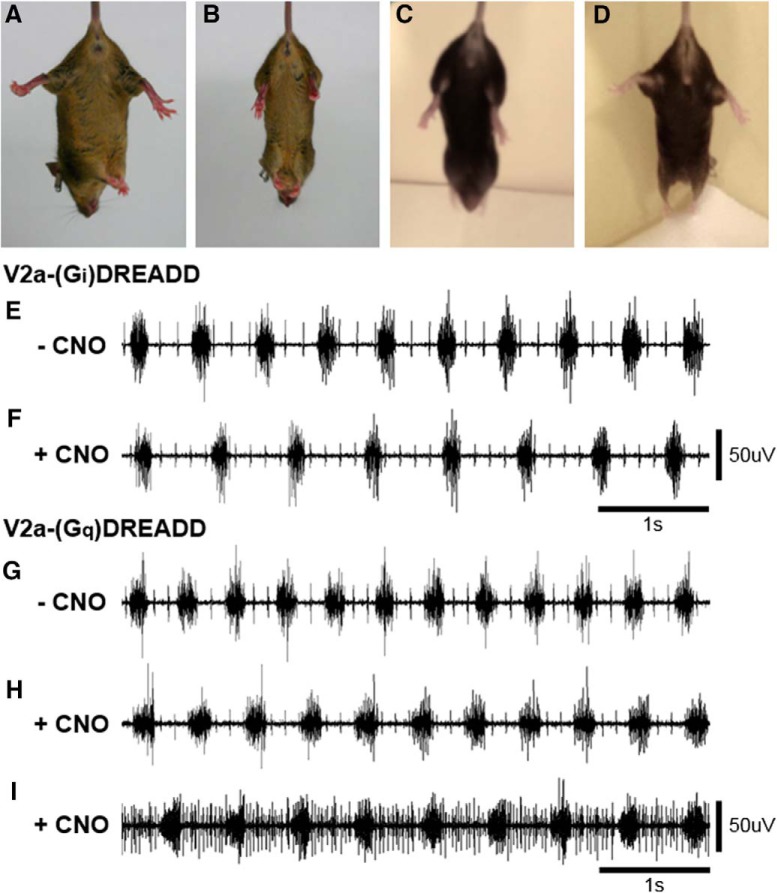Figure 7.
Increasing and decreasing the excitability of V2a neurons differentially affects motor functions. A–D, Mice were suspended by the tail to assess hindlimb extension. A, Wild-type mice extend their hindlimbs. B, Chx10::DTA mice (in which V2a neuron were ablated during development) do not splay their hindlimbs. C, V2a-(Gi)DREADD mice treated with 10 mg/kg bw CNO do not splay their hindlimbs. D, V2a-(Gq)DREADD mice treated with 1.0 mg/kg bw CNO splay their hindlimbs. E–I, Diaphragm EMG was recorded under isoflurane anesthesia in V2a-(Gi)DREADD and V2a-(Gq)DREADD mice. Normal diaphragm bursting activity is observed in V2a-(Gi)DREADD mice before (E) and after (F) silencing V2a neurons with 10 mg/kg bw CNO, as well as in V2a-(Gq)DREADD mice before CNO treatment (G). V2a-(Gq)DREADD mice treated with 1.0 mg/kg bw CNO alternate between a normal diaphragm bursting pattern (H) and a pattern that also includes diaphragm activity during the expiratory phase (I).

